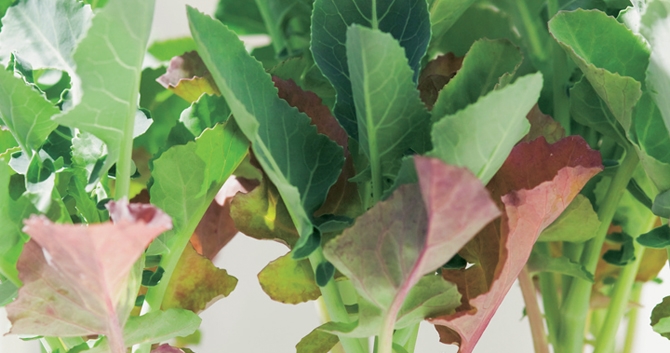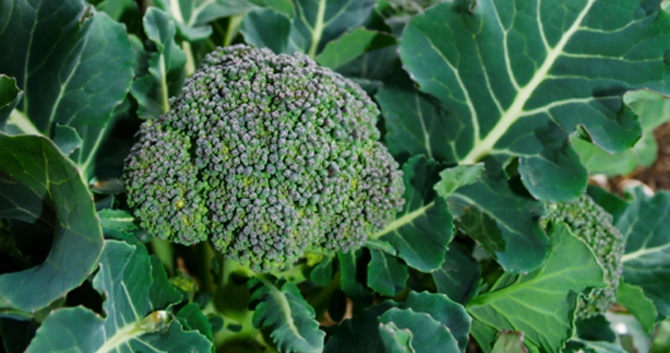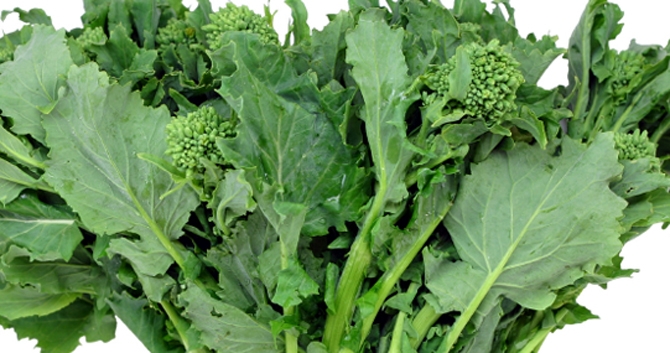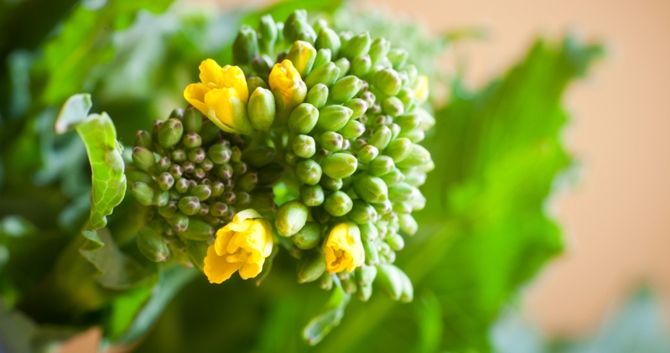Broccoli is one of the most versatile vegetables in the kitchen, showing up in everything from dips and salads to soups, side dishes, stir-fries, casseroles and bread. With its soft and flowery florets, crunchy stems and stalks, and colors ranging from deep sage to dark green to purplish-green, broccoli deserves a place in any vegetable garden.
Broccoli originated in Italy where its name means “little sprouts.” It’s a member of the Brassicaceae family which also includes cauliflower, kale, cabbage, collards, turnips, rutabagas, Brussels sprouts, and Chinese cabbage. All brassica vegetables have flowers with four petals resembling a Greek cross, earning them the name crucifers or cruciferous.
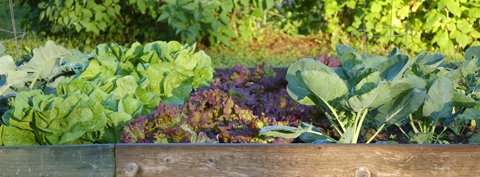 Broccoli is an easy plant to grow, thriving in garden plots, raised beds and even containers
Broccoli is an easy plant to grow, thriving in garden plots, raised beds and even containers
There are several popular cultivars of broccoli, along with some recent hybrids that expand the range of flavors, textures, and colors. The choice of which to try depends on growing conditions and personal preference. If you’re not sure, pick some up at the grocery store or farmer’s market for a taste test to see which you want to grow:
- Calabrese is the familiar supermarket variety with a large green head and thick stalks.
- Sprouting broccoli has smaller purple or white heads and many thinner stalks. It has a mild delicate taste.
- Romanesco looks peculiar but tastes like cauliflower. Its spiraling chartreuse head is tightly packed with conical florets.
- Broccoli rabe has tiny heads on thin stems with lots of jagged leaves. Also known as di rape, rapini, broccoli raab, and gai lin (Chinese broccoli), its flavor is slightly bitter and more pungent than other broccoli varieties.
- Newer varieties include broccolini (a cross between broccoli and Chinese broccoli) and broccoflower (a cross between broccoli and cauliflower).
 Broccoli is a superfood with more vitamin C than an orange and as much calcium ounce for ounce as a glass of milk
Broccoli is a superfood with more vitamin C than an orange and as much calcium ounce for ounce as a glass of milk
Look for varieties with features that will be assets to your garden plans, such as heat tolerance, days to maturity, and resistance to pests or diseases.
Getting Started
A little preparation before planting will simplify care and maximize results. When choosing a location, keep in mind that broccoli needs 4 to 5 hours a day of sunlight. Remember that trees may not have all their leaves in early spring and avoid areas that will be shaded later in the season. Broccoli will produce in partial shade, but the leaves will be larger and the heads will be smaller.
Broccoli also likes moist, well-drained soil, so make sure that the hose or sprinkler reaches the site so you can easily water plants regularly. Before planting, remove debris and loosen the soil, breaking up any clumps that are larger than an apple. Add compost or other organic garden mix to provide nutrients for healthy growth.
Care Tips
Broccoli is an easy plant to grow, thriving in garden plots, raised beds and even containers as long as they are given the room and care they need. Broccoli prefers cool temperatures so plant in early spring giving it time to grow and be ready to harvest before the summer heat. Alternatively, plant in mid-summer so plants mature in the fall when the weather is cooler.
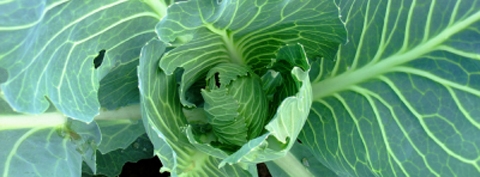 For a tight head of broccoli, tie a string around the base of the plant to keep the leaves together while the head forms
For a tight head of broccoli, tie a string around the base of the plant to keep the leaves together while the head forms
Planting: Broccoli needs plenty of room to grow. Mature plants are typically 2 to 3 feet high and 2 to 4 feet wide. Space young plants 18 inches apart and leave 12 to 18 inches between plants. When transplanting, if the plants are a bit floppy and lanky at the base, pick off bottom leaves and plant slightly deeper for sturdier stalks.
Watering: Broccoli does not have deep roots, so it’s important to keep plants well watered throughout the season. Water at least once per week to be sure the soil doesn’t dry out.
Mulching: Mulch around plants to keep the soil cool and promote healthy development of the heads.
Support: For a tight head of broccoli, tie a string around the base of the plant to keep the leaves together while the head forms. Otherwise, the broccoli head can get rangy.
Fertilizing: Fertilize broccoli regularly with a product formulated for vegetables. Follow package instructions carefully for best results.
Harvesting
Harvesting broccoli is a bit of balancing act between getting the largest head possible and waiting too long, allowing the tight buds to open into tiny yellow flowers. If the buds begin to swell or show yellow (the flower petals), cut the head from the stem right away, no matter how small it is, because the opening buds have a mealy texture.
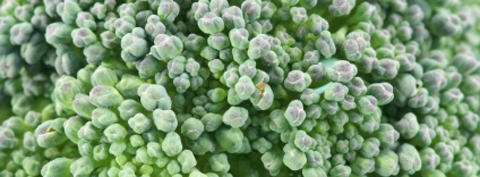 Harvest broccoli before the flowers begin to emerge
Harvest broccoli before the flowers begin to emerge
Broccoli takes about 55 to 75 days to mature, depending on the variety. It can be picked anytime the head looks like what you see in the produce aisle. Cut the head, leaving about 6 inches of the stem attached. After you cut the central head, plants will produce side shoots with smaller heads for several months. Harvest these frequently to keep plants from flowering, which ends their season.
Companion Plants
Take advantage of plants that grow well with broccoli to deter pests, enhance flavor, encourage growth, or improve health. The following plants are good choices:
- Certain plants like celery, potatoes, and onions improve the flavor of broccoli when planted nearby. Beets also combine well with broccoli, requiring little of the calcium broccoli needs to grow.
- Aromatic herbs like basil, dill, mint, rosemary, sage and thyme help deter pests.
- Repel aphids by planting broccoli with marigolds or divert their attention with nasturtiums, which they prefer over broccoli. Trap cabbage worms with geraniums.
Several edibles share space well with broccoli, using the garden plot to full advantage. Use the space between broccoli plants to tuck in the following:
- Spinach, looseleaf lettuce and arugula stay fairly small, and grow better in the heat of summer when shaded by broccoli leaves.
- Radishes and garlic also grow well with broccoli.
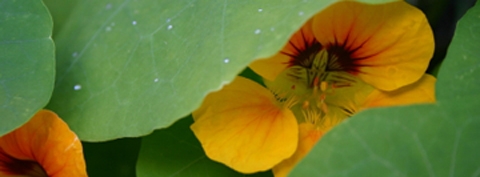 Nasturtium lure pests away from broccoli
Nasturtium lure pests away from broccoli
Conversely, there are a number of plants that don’t make good neighbors for broccoli, competing for nutrients or attracting unwanted pests. Steer clear of planting any of the following too close to broccoli:
- Tomatoes inhibit broccoli’s growth. Both require lots of calcium for healthy growth and compete with each other for this important nutrient.
- Strawberries negatively affect the growth and flavor of broccoli.
- Pole beans, mustards, and peppers also make poor companions for broccoli.
Troubleshooting
Broccoli has its own unique vocabulary for some of the weather and pest related challenges you may encounter. There are generally few problems with growing broccoli, but it’s helpful to be alert for those that could come up.
Bolting: If you wait too long to harvest hoping for larger heads, the buds will open into yellow flowers as the plant begins seed production (aka bolting). Hot weather may accelerate bolting so keep a watchful eye on the crop and harvest sooner.
Buttoning: If you notice the plant and head look stunted, it was probably stressed by too much heat. You can still eat what’s there, but there isn’t anything that can be done to encourage growth.
Pests: There are several unwanted visitors who might have a strong interest in your broccoli. Fortunately there are some simple strategies available. Use companion plants as outlined above, or cover plants with horticultural fleece. Try using cardboard or metal collars around the base of the plant to deter cutworms. If determined pests still manage to find your plants, consult your local garden center on how to best combat them in your area.


